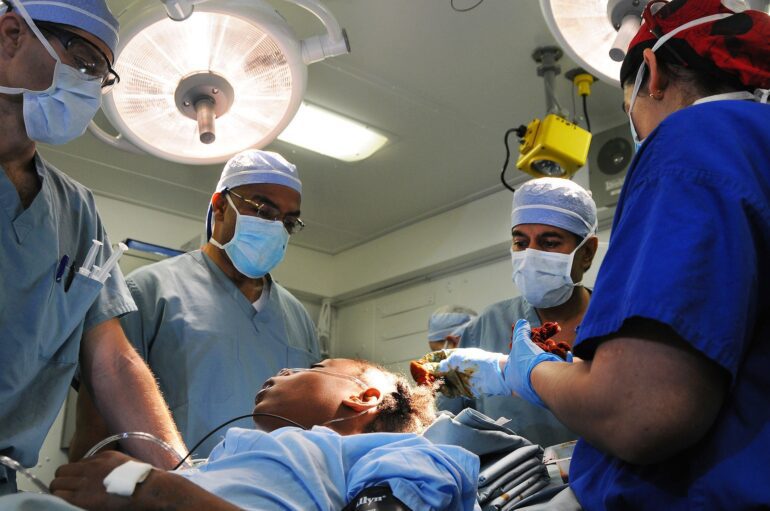TL;DR:
- Harvard researchers unveil CHARM, an AI tool for real-time brain tumor DNA decoding during surgery.
- CHARM revolutionizes neurosurgery by providing critical information to impact patient outcomes.
- Traditional diagnostic methods face limitations, but CHARM overcomes them by swiftly identifying tumor molecular identity.
- The AI tool allows on-the-spot treatment administration for specific tumors.
- CHARM demonstrates remarkable accuracy in distinguishing tumors with specific molecular mutations.
- It accurately classifies significant types of gliomas based on distinct molecular features and prognoses.
- The AI tool captures visual characteristics, aiding in identifying aggressive gliomas and molecular alterations in low-grade gliomas.
- CHARM’s versatility extends to the potential identification of other brain cancer subtypes and cancers in other organs.
- Validation testing and regulatory clearance are essential before clinical deployment.
Main AI News:
In a groundbreaking development that could reshape the landscape of neurosurgery, Harvard researchers have unveiled CHARM, an exceptional Artificial Intelligence (AI) tool capable of deciphering a brain tumor’s DNA during surgery in real-time. This revolutionary technology has the potential to provide vital information that significantly impacts patient outcomes, ushering in a new era of precision medicine.
Traditional diagnostic methods in neurosurgery involve freezing brain tissue and examining it under a microscope. However, this approach has limitations, as freezing can alter cell appearance, affecting clinical evaluation accuracy. Furthermore, identifying subtle genomic variations through microscopic examination proves challenging for human pathologists, even with advanced microscopes.
Enter CHARM, an AI-driven solution designed to overcome these obstacles by extracting invaluable biomedical signals from frozen pathology slides. By quickly determining a tumor’s molecular identity during surgery, neurosurgeons gain critical insights into its behavior and aggressiveness. Armed with this knowledge, they can make well-informed decisions about the extent of brain tissue removal, delicately balancing cognitive function preservation with the effective elimination of malignant tissue.
One of CHARM’s standout advantages lies in its ability to facilitate on-the-spot treatment administration with drug-coated wafers directly into the brain during surgery. This personalized approach proves particularly beneficial for specific tumors that respond well to targeted therapy.
To achieve its exceptional performance, the AI tool was extensively trained using an expansive dataset comprising brain tumor samples from diverse patient populations. CHARM demonstrated remarkable accuracy during testing, successfully distinguishing tumors with specific molecular mutations with an impressive 93 percent success rate. Moreover, it accurately classified three significant types of gliomas, the most aggressive and common form of brain cancer, based on their distinct molecular features and prognoses.
Going beyond molecular profiling, CHARM captures visual characteristics of the surrounding tissue, enabling the identification of areas with higher cellular density and increased cell death—key indicators of more aggressive gliomas. Additionally, the AI tool detects clinically important molecular alterations in low-grade gliomas, which are less aggressive and less likely to invade surrounding tissue.
CHARM’s success in correlating cellular appearance with the tumor’s molecular profile further enhances its accuracy, mimicking how human pathologists visually assess tumor samples. This multidimensional approach allows for a comprehensive understanding of the tumor, ensuring more informed decisions regarding treatment plans.
Impressively versatile, CHARM’s potential extends beyond gliomas. Researchers believe it can be retrained to identify other subtypes of brain cancer and potentially cancers in other organs, such as the colon, lung, and breast. The adaptability of this AI tool will be paramount in keeping up with emerging disease classifications and incorporating the latest knowledge to maintain peak performance.
However, before CHARM can be deployed in hospitals for clinical use, it must undergo rigorous validation testing in real-world settings and obtain clearance from regulatory authorities like the FDA. Nevertheless, its implications for real-time precision oncology are profound, opening new avenues for enhancing patient outcomes and optimizing treatment strategies for brain tumor patients.
Conclusion:
CHARM’s introduction signifies a transformative leap in neurosurgery. This pioneering AI advancement holds the potential to reshape the market by providing neurosurgeons with crucial real-time molecular insights, elevating precision oncology to unprecedented heights. As validation and adoption proceed, the medical community can anticipate enhanced patient outcomes and optimized treatment strategies, positioning CHARM at the forefront of cutting-edge neurosurgical oncology. Businesses and stakeholders should closely monitor the progress and integration of CHARM to capitalize on the emerging opportunities and advancements it offers in the healthcare market.

